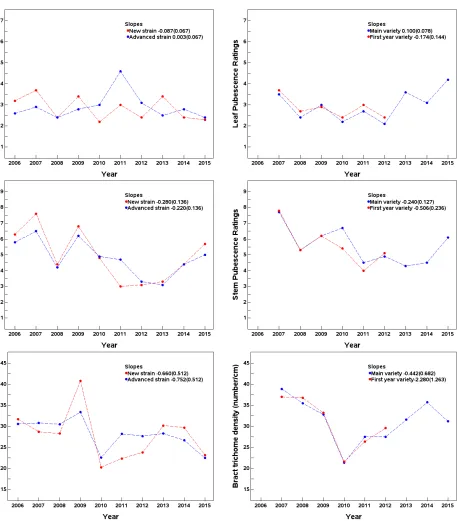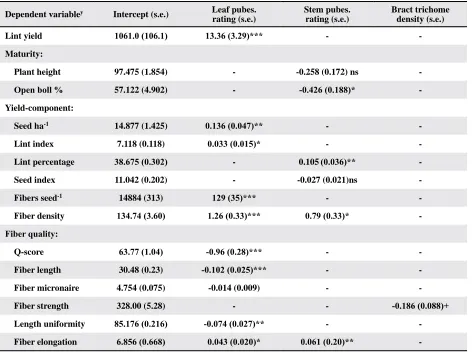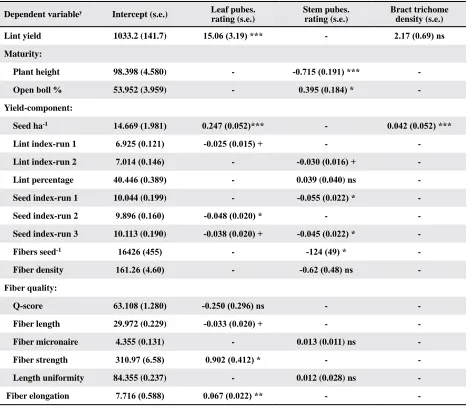Relationships of Plant Trichomes to Yield and Fiber Quality Parameters in Upland Cotton
Full text
Figure



Related documents
Perhaps the clearest illustrations of corn pensation for motor disability are the dis tinctive adaptive motions or postures of the head and neck incident to swallow in sub jects
INCIDENCE OF ABNORMAL URINARY FINDINGS IN CHILDREN EXPOSED TO THE ATOMIC BOMB IN HIROSHIMA.. By Margaret P. Sullivan, M.D., and Yasushi
Sighting trend of the Indian Skimmer (Charidiformes: Laridae: Rynchops albicollis Swainson, 1838) in National Chambal Gharial Sanctuary (1984–2016) reflecting on the feasibility
This article discussed about the different types of nucleic acid amplification techniques and methods available to pharmaceutical microbiologists working on quality
with excretory ducts. The remnants of time atrophied hair follicles consisted merely of compact groups of elongated cells botind b dermal sheaths of dense connective tissue. These
1 It is a degenerative disease of the brain and the most common cause of dementia in older people, accounting for 60% to 80% of cases of late-life cognitive dysfunction.. 1,2,3
On the other hand, demersal fish species was the main prey group (W=42%) in the stomachs by percentage of weight (Figure 8).. The stomach fullness of 19 female thornback rays